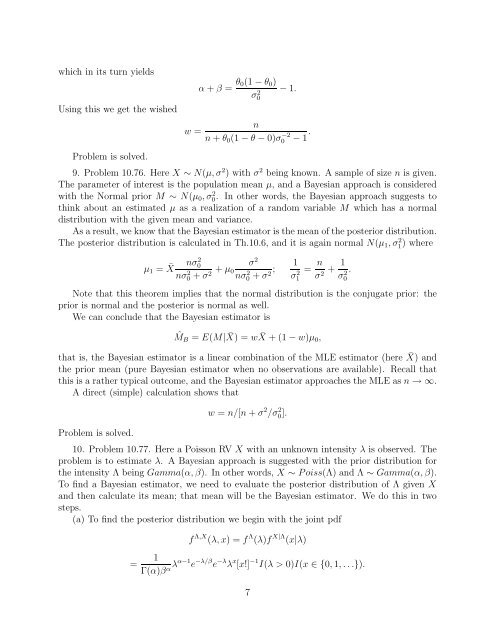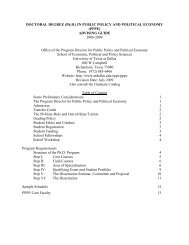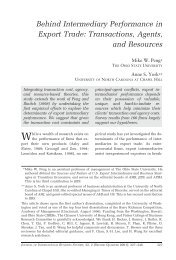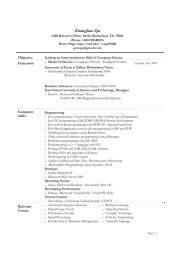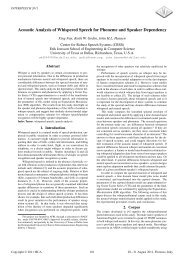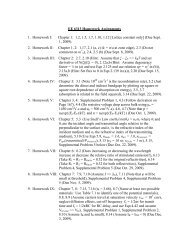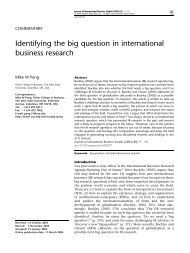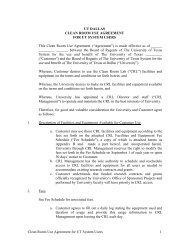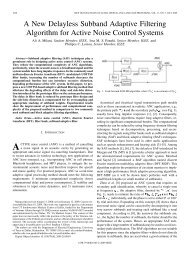SOLUTION FOR HOMEWORK 3, STAT 4352 Welcome to your third ...
SOLUTION FOR HOMEWORK 3, STAT 4352 Welcome to your third ...
SOLUTION FOR HOMEWORK 3, STAT 4352 Welcome to your third ...
You also want an ePaper? Increase the reach of your titles
YUMPU automatically turns print PDFs into web optimized ePapers that Google loves.
which in its turn yields<br />
Using this we get the wished<br />
Problem is solved.<br />
w =<br />
α + β = θ0(1 − θ0)<br />
σ 2 0<br />
− 1.<br />
n<br />
n + θ0(1 − θ − 0)σ −2<br />
0 − 1 .<br />
9. Problem 10.76. Here X ∼ N(µ, σ 2 ) with σ 2 being known. A sample of size n is given.<br />
The parameter of interest is the population mean µ, and a Bayesian approach is considered<br />
with the Normal prior M ∼ N(µ0, σ 2 0. In other words, the Bayesian approach suggests <strong>to</strong><br />
think about an estimated µ as a realization of a random variable M which has a normal<br />
distribution with the given mean and variance.<br />
As a result, we know that the Bayesian estima<strong>to</strong>r is the mean of the posterior distribution.<br />
The posterior distribution is calculated in Th.10.6, and it is again normal N(µ1, σ2 1 ) where<br />
µ1 = ¯ X nσ2 0<br />
nσ2 + µ0<br />
0 + σ2 σ2 nσ2 0 + σ2; 1<br />
σ 2 1<br />
= n 1<br />
+<br />
σ2 σ2. 0<br />
Note that this theorem implies that the normal distribution is the conjugate prior: the<br />
prior is normal and the posterior is normal as well.<br />
We can conclude that the Bayesian estima<strong>to</strong>r is<br />
ˆMB = E(M| ¯ X) = w ¯ X + (1 − w)µ0,<br />
that is, the Bayesian estima<strong>to</strong>r is a linear combination of the MLE estima<strong>to</strong>r (here ¯ X) and<br />
the prior mean (pure Bayesian estima<strong>to</strong>r when no observations are available). Recall that<br />
this is a rather typical outcome, and the Bayesian estima<strong>to</strong>r approaches the MLE as n → ∞.<br />
A direct (simple) calculation shows that<br />
Problem is solved.<br />
w = n/[n + σ 2 /σ 2 0 ].<br />
10. Problem 10.77. Here a Poisson RV X with an unknown intensity λ is observed. The<br />
problem is <strong>to</strong> estimate λ. A Bayesian approach is suggested with the prior distribution for<br />
the intensity Λ being Gamma(α, β). In other words, X ∼ Poiss(Λ) and Λ ∼ Gamma(α, β).<br />
To find a Bayesian estima<strong>to</strong>r, we need <strong>to</strong> evaluate the posterior distribution of Λ given X<br />
and then calculate its mean; that mean will be the Bayesian estima<strong>to</strong>r. We do this in two<br />
steps.<br />
(a) To find the posterior distribution we begin with the joint pdf<br />
=<br />
f Λ,X (λ, x) = f Λ (λ)f X|Λ (x|λ)<br />
1<br />
Γ(α)β αλα−1 e −λ/β e −λ λ x [x!] −1 I(λ > 0)I(x ∈ {0, 1, . . .}).<br />
7


